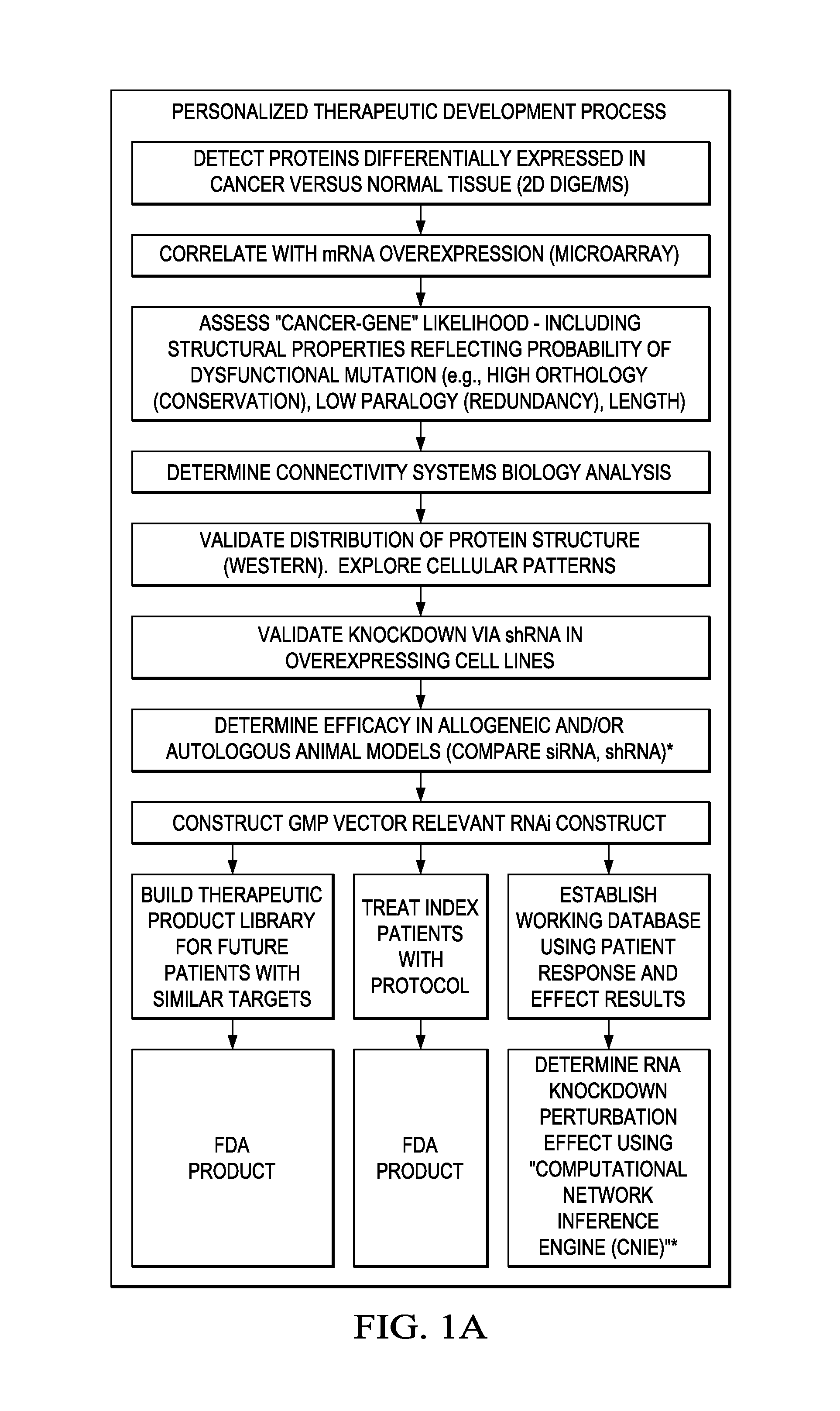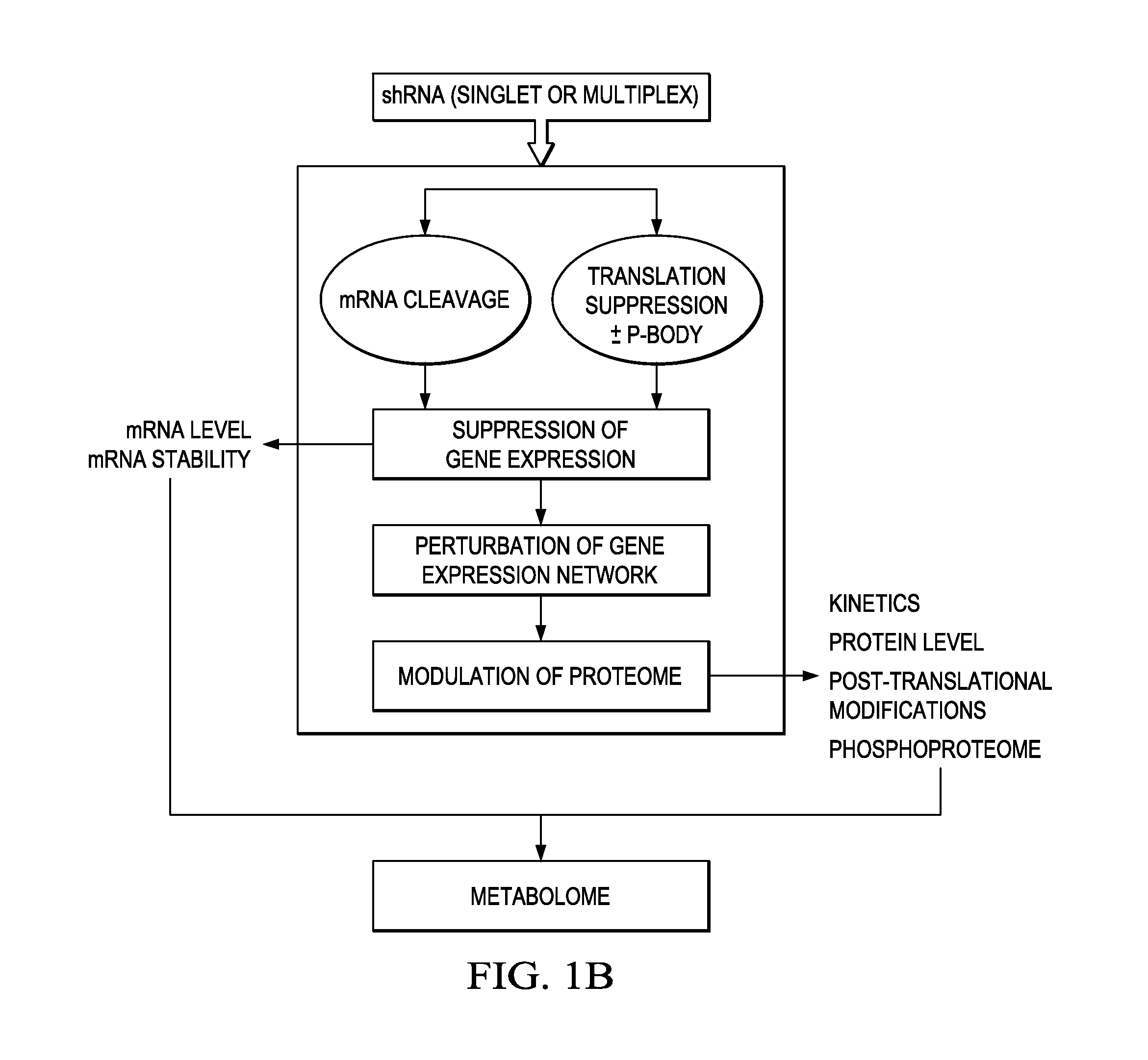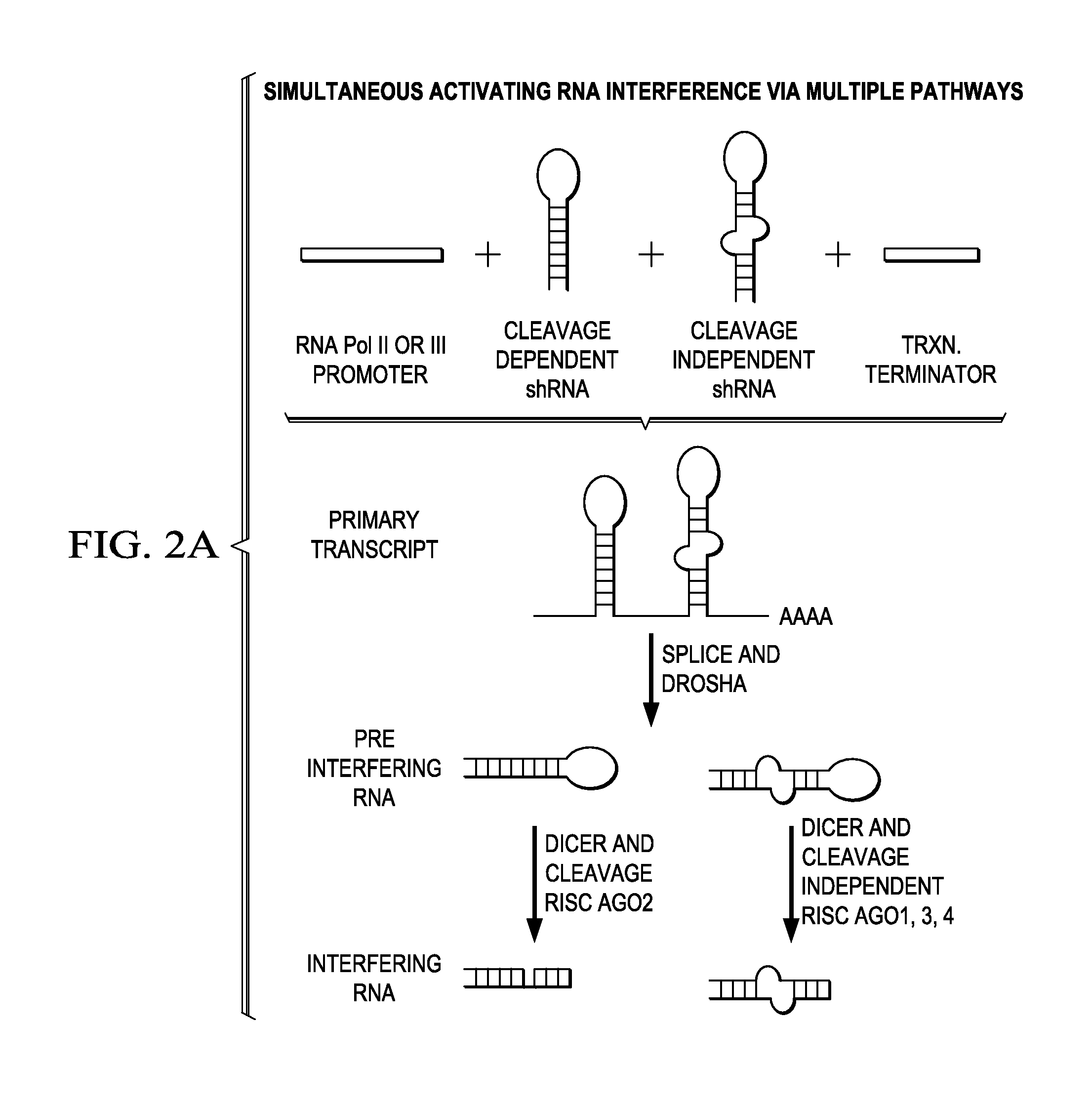Individualized cancer therapy
a cancer and individual therapy technology, applied in the field of cancer therapy, can solve the problems of significant limitations and drawbacks of drugs, traditional chemotherapeutics have compromised efficacy, and approaches have exhibited significant limitations
- Summary
- Abstract
- Description
- Claims
- Application Information
AI Technical Summary
Benefits of technology
Problems solved by technology
Method used
Image
Examples
examples
[0140]The following provides a non-limiting example of how the methods described herein may be used to identify a set of Target Genes in an individual suffering from cancer based on differential mRNA and protein expression patterns (in malignant versus non-malignant tissues). Furthermore, the following demonstrates that RNAi molecules may be designed and used to modulate the expression of such Target Genes to achieve a therapeutic effect.
example
Process for Reducing Cancer Cell Growth
[0141]Patient Selection
[0142]Patient-1 is a 72-year old male with melanoma and a history of multiple recurrent disease episodes. He initially underwent two surgical resections without adjuvant therapy. At the time of the third recurrence, on Mar. 9, 2005, an auxiliary node was resected and tissue was processed at the Mary Crowley Medical Research Center (Dallas, Tex.).
[0143]Prior to surgery, an IRB-approved tissue harvest consent was obtained. A normal lymph node and skin tissue were resected for comparative analysis. Histologic review demonstrated 95% cancer cells in the resected node. The specimens were analyzed for differential and discriminatory genomic and proteomic expression as described herein. On Jan. 11, 2006, a PET scan identified areas of uptake in the left supraclavicular region, the right pericardiophrenic region, a retroperitoneal node, as well as several ill-defined lung nodules that were consistent with metastatic disease. Thes...
PUM
| Property | Measurement | Unit |
|---|---|---|
| pH | aaaaa | aaaaa |
| time | aaaaa | aaaaa |
| time | aaaaa | aaaaa |
Abstract
Description
Claims
Application Information
 Login to View More
Login to View More - R&D
- Intellectual Property
- Life Sciences
- Materials
- Tech Scout
- Unparalleled Data Quality
- Higher Quality Content
- 60% Fewer Hallucinations
Browse by: Latest US Patents, China's latest patents, Technical Efficacy Thesaurus, Application Domain, Technology Topic, Popular Technical Reports.
© 2025 PatSnap. All rights reserved.Legal|Privacy policy|Modern Slavery Act Transparency Statement|Sitemap|About US| Contact US: help@patsnap.com



